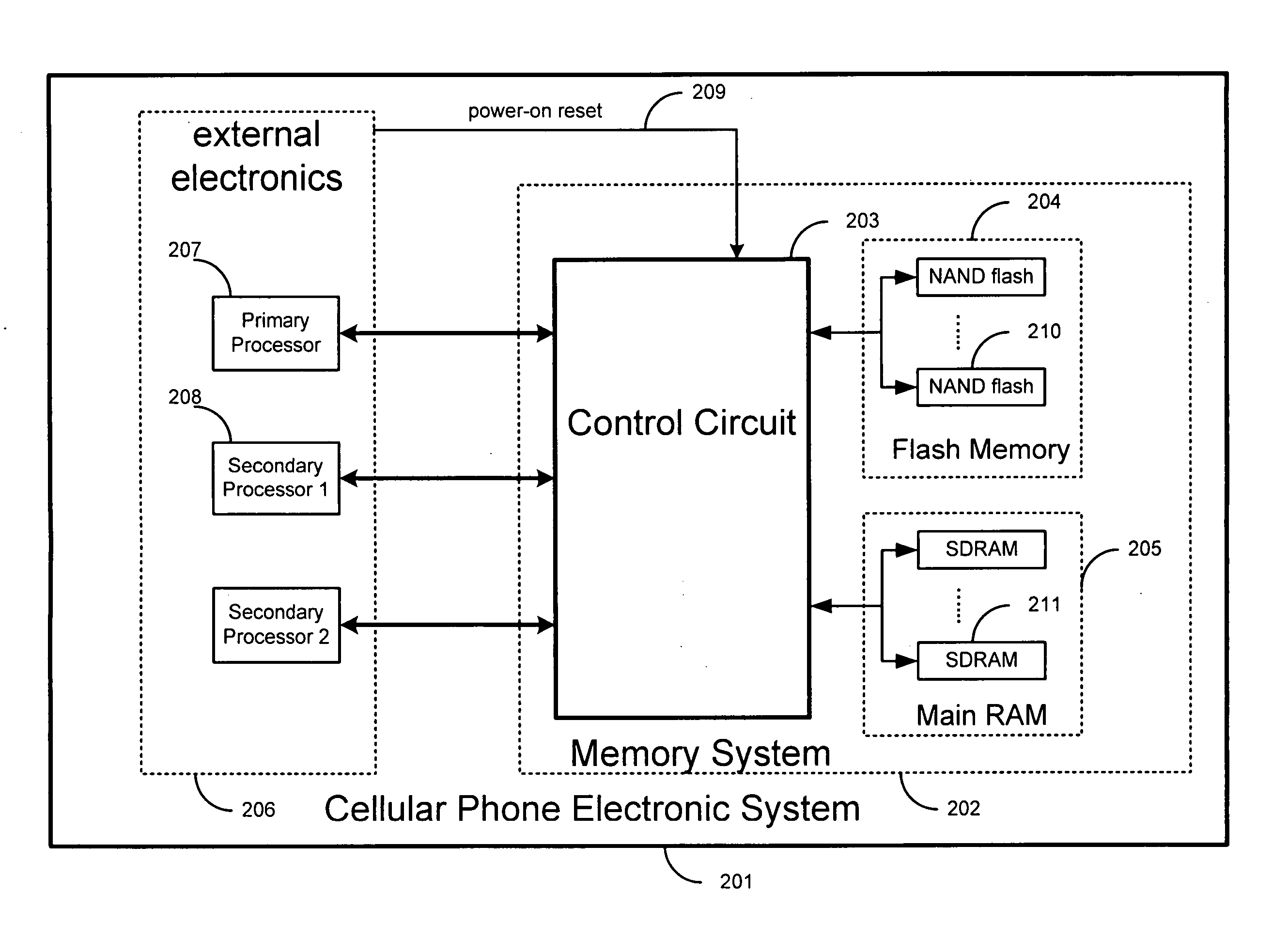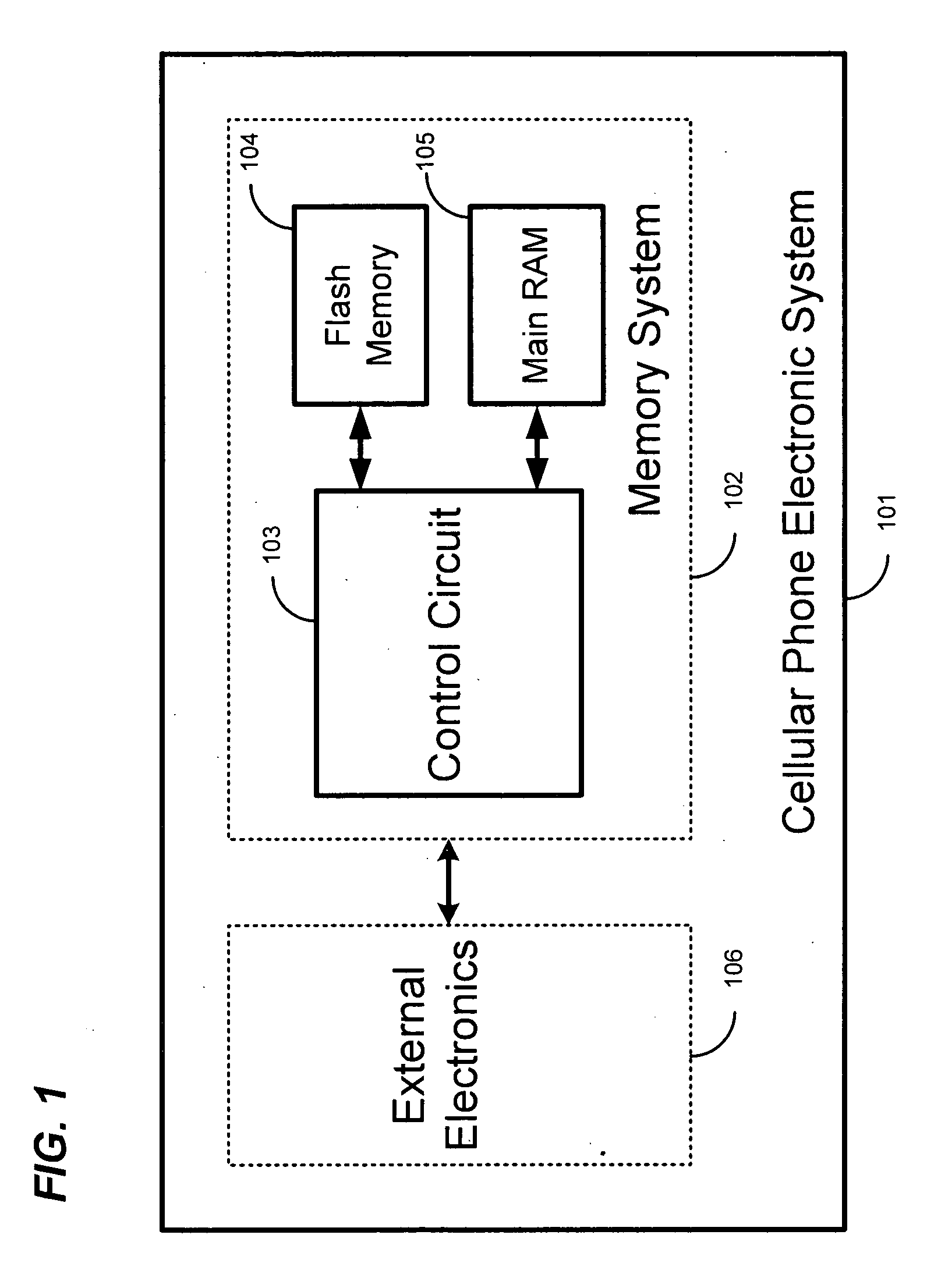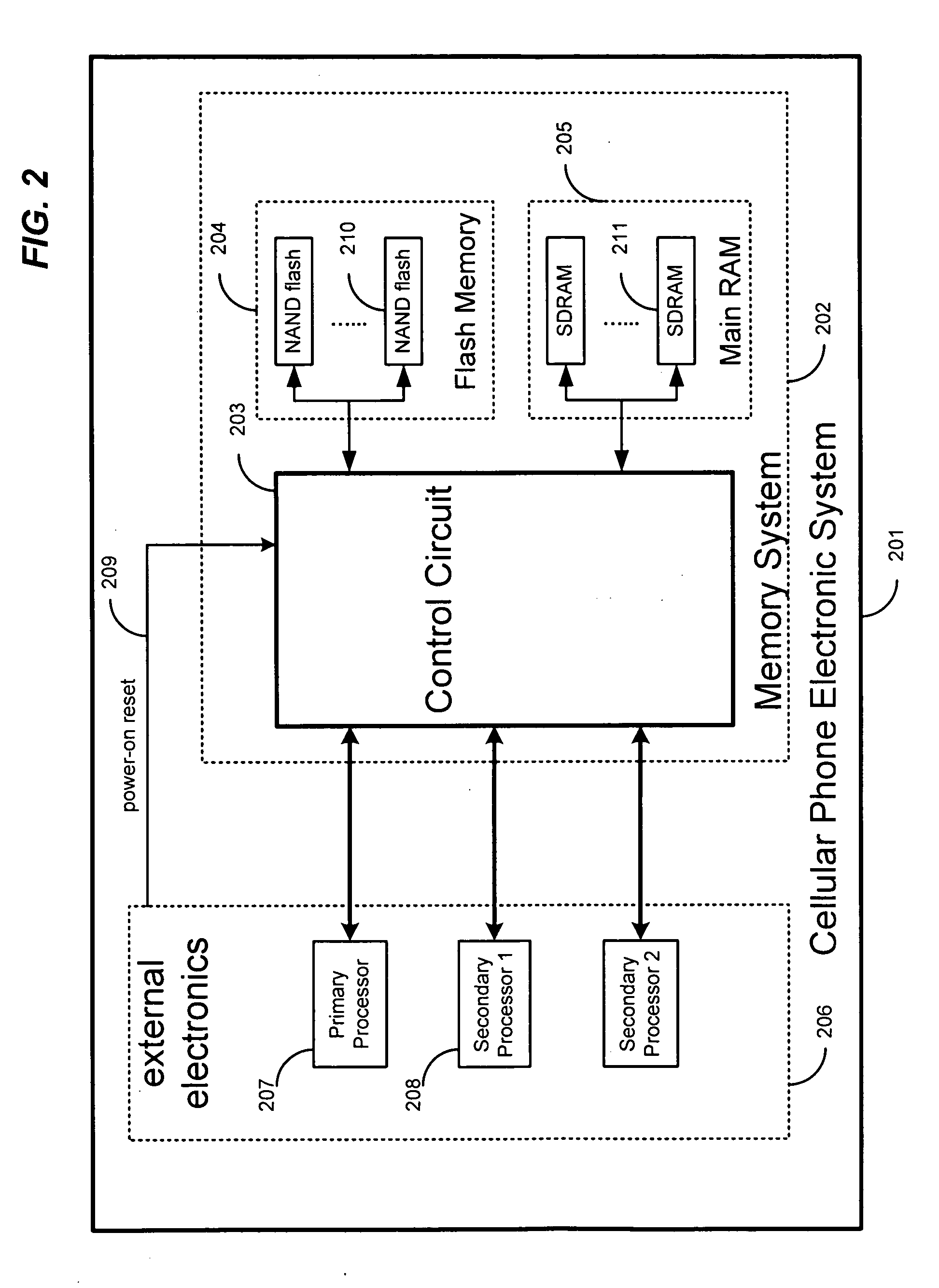Systems and methods for providing nonvolatile memory management in wireless phones
a wireless phone and non-volatile memory technology, applied in the field of memory management, can solve the problems of high-density flash memory often having a higher probability of introducing errors to data, many current complex cellular phones include multiple processors, and reduce the number of memory devices, reduce costs and the effect of siz
- Summary
- Abstract
- Description
- Claims
- Application Information
AI Technical Summary
Benefits of technology
Problems solved by technology
Method used
Image
Examples
first embodiment
[0063] As depicted in FIG. 1, in a first embodiment, an example memory system (102) is provided as a part of the electronic system of a cellular phone (101). The memory system (102) includes a high-density non-volatile Flash memory (104), a volatile random access memory (105), and a control circuit (103). Hereinafter, for the purposes of clarity and not limitation, the volatile random access memory which is in the memory system (102) but is not a part of the control circuit (103) is referred to as the “Main RAM” (105). In the example memory system (102), both the Flash memory (104) and the Main RAM (105) are connected to a control circuit (103). The control circuit (102) contains a Flash memory controller, discussed in greater detail below, which provides control signals to operate the Flash memory (104), as well as a Main RAM controller, also described in greater detail below, which provides control signals to operate and interface with the Main RAM (105). As will be discussed in g...
third embodiment
[0071] In a third embodiment, the control circuit memory allocated to the SIP code is absent in the control circuit or not allocated for SIP code storage. However, the FMM circuit 311, instead of a boot controller circuit (BOOT_CTLR 3133), has the responsibility of loading the system boot code from the Flash memory to the Main RAM.
fourth embodiment
[0072] In the memory system, the memory system control circuit contains a plurality of Flash memory controllers and a plurality of Main RAM controllers, and thus provides not only more memory space in the memory system, but also a higher data transfer rate.
PUM
 Login to View More
Login to View More Abstract
Description
Claims
Application Information
 Login to View More
Login to View More - R&D
- Intellectual Property
- Life Sciences
- Materials
- Tech Scout
- Unparalleled Data Quality
- Higher Quality Content
- 60% Fewer Hallucinations
Browse by: Latest US Patents, China's latest patents, Technical Efficacy Thesaurus, Application Domain, Technology Topic, Popular Technical Reports.
© 2025 PatSnap. All rights reserved.Legal|Privacy policy|Modern Slavery Act Transparency Statement|Sitemap|About US| Contact US: help@patsnap.com



